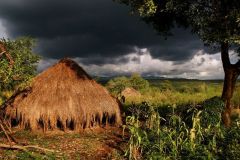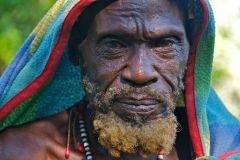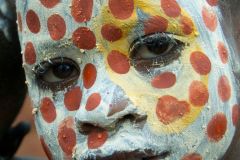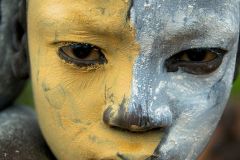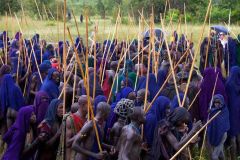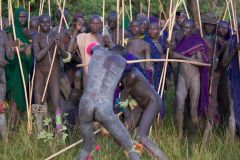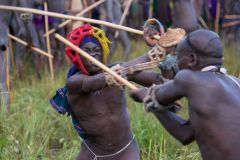The south-west
The small town of Mizan Tefari is of little interest for the visitor but it is leading to a very interesting area for the adventurous traveler. It is the last small town before entering the far south-west of Ethiopia, finding a lush green area with coffee plantations and finally descending down to the savanna on the west bank of the Omo River. There is no bridge over the river yet (a crossing is planned near Omerate) and the other side of the river is the often visited and relatively easily accessible southern Ethiopia. Like on the other side of the river, it is an area with a great diversity of people living here: Bench, Dizi, Suri, Me’en, and Nyangatom to name the most important.
Besides budget hotels in Mizan Teferi overnight in the area is at basic campsites.
Coffee and tea
50 km before reaching Mizan Teferi from the north the second largest coffee plantation in Ethiopia is found, the Tepi Coffee Estate. The largest coffee plantation in Ethiopia is found 30 km west of Mizan Teferi, the Bebeka Coffee Estate. Tea plantations are found east of Mizan Teferi at Wushwush.
The Suri people
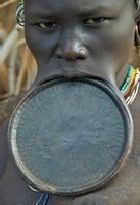
The small settlement of Kibish lies in the heartland of the Suri people. The Suri (Chai and Tirma) are related to the Mursi, found on the other side of the Omo River, and the Me’en people. Suri, Mursi en Me’en people are together also known as Surma people, speak a Surmic language. The Suri people practice body scarification and the women wear lip plates. Together with their body painting skills their looks are extraordinary.
After the harvest season, the Suri (and Mursi) organize ceremonial ‘thagine’ stick fighting events (often called ‘donga’ after the pole used for the fight). It is a competition of brief but furious fights between individuals from different villages. The whole event may take several days. This fascinating spectacle is eagerly watched by all inhabitants of participating villages.
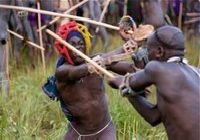
South of the area where the Suri people are living the Nyangatom people are found.
Trekking
Trekkings from 1 day up to more than a week are possible within the Suri territory. This is a great way to explore the area in depth and experience the natural beauty and the way of life of the Suri people. The longer trekkings going into Omo National Park.
Omo National Park
The very remote and inaccessible Omo National Park offers an extraordinary wilderness experience. It is comparable with its counterpart at the other (east) side of the Omo River, Mago National Park which is much easier to access. These parks support a great variety of wildlife but are under pressure from the ever-increasing human population.
Origins of humankind?
The diversity of people living in the Omo Valley is unique for the planet. It is believed it has been a crossroads in human development, and important prehistoric findings prove this. Near the small settlement of Bume (also called Kibish, but not to be confused with Suri Kibish) the oldest remains of humans (Homo sapiens) are found, dated 195.000 years back. The lower valley of the Omo River is declared a World Heritage Site.


